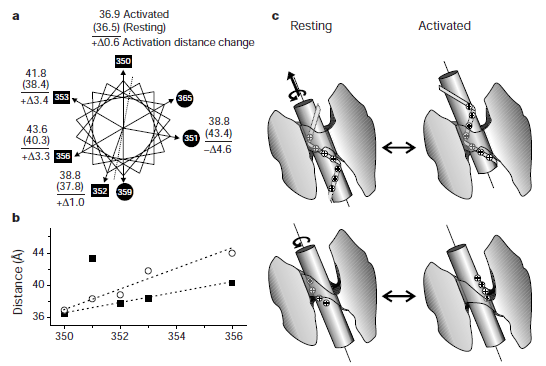
Spectroscopic mapping of voltage sensor movement in the Shaker potassium channel
Abstract
Voltage-gated ion channels underlie the generation of action potentials and trigger neurosecretion and muscle contraction. These channels consist of an inner pore-forming domain, which contains the ion permeation pathway and elements of its gates, together with four voltage-sensing domains, which regulate the gates. To understand the mechanism of voltage sensing it is necessary to define the structure and motion of the S4 segment, the portion of each voltage-sensing domain that moves charged residues across the membrane in response to voltage change. We have addressed this problem by using fluorescence resonance energy transfer as a spectroscopic ruler to determine distances between S4s in the Shaker K+ channel in different gating states. Here we provide evidence consistent with S4 being a tilted helix that twists during activation. We propose that helical twist contributes to the movement of charged side chains across the membrane electric field and that it is involved in coupling voltage sensing to gating.